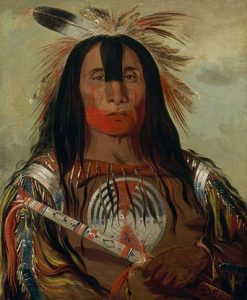Archaeologist using Radiocarbon Dating feel certain that by 13,000 years ago the Clovis Culture was well established throughout North America. Scientists and Linguistic experts have identified 40 stock languages from which hundreds evolved. American Indian Culture diversified as these Hunter, Gathering Indians separated and spread across the land. Each of these Tribes would develop their own unique lifestyles, beliefs, rituals, and customs and, there were many hundreds of these sub-cultures before the arrival of the Europeans in America.
American Indian Culture
Regions
At the time of Columbus in 1492, there were 10 distinctively different identifiable Regions with dramatically different cultures. The climate and natural resources were the determining factors in how these cultures evolved so differently. The Arctic, Sub-Arctic, Northwest Coast, Plateau, Great Basin, the Plains, Northeast, Southeast, Southwest, and California made up these different regions. Each of these regions, of course, contained many Tribes each with different cultures. However, they shared many similarities in the way their societies developed.

Society
Agriculture was perhaps the single greatest contributing factors in creating the need to develop sophisticated urban societies because you had to live in a permanent location to cultivate crops. One example of this was the Mississippian Culture that peaked in the 13th century. They developed throughout the Mississippi River Valley and Southeast a network of cities and trade routes with one of these containing up to an estimated population of 40,000. Located just outside St. Louis, Missouri this Mound building City was called Cahokia and, there were many more cities though not as large. The Hopewell Tradition is a term coined to describe the advanced trade routes, usually along the river systems, that was well established as early as 200 BC. To the Europeans, Tribal life may have been seen as primitive; however, in reality, they were great societies that the Europeans failed to understand. This cultural misunderstanding would lead to the decimation of many unique Tribes and their American Indian Culture over the following 400 years since colonization began.
Assimilation
American Indian culture today is due in large part to what beliefs, rituals and customs the Tribes were able to protect and hand down from generation to generation despite the fact they were invaded by a people determined to eradicate it. The effect the Europeans had on Indian culture was immediate, profound and widespread. Ever forced west of their native land with the white man’s expansion, many Tribes merged or separated, cultures assimilated new ideas and technologies and life was never again the same for Native Indians. Amazingly, throughout these years of relocations, mergers, and assimilation, many Tribes have preserved their culture. The Reservations that were established for Native Indians over the years, actually helped them to preserve their original way of life.
Today
Although most Native Americans live off the Reservations, they are proud of their heritage and maintain close ties to their Tribes and continue to participate in Rituals and Celebrations. There are 567 Federally Registered Tribes still in existence currently and, 326 Reservations spread throughout the Country. Many welcome visitors to their Reservations and operate Museums to preserve forever their history. Today, Celebrations like the famous Pow Wows are a great way to experience Indian Culture first hand and, they are fun to attend for the whole family. Many hundreds are held each year across America and, one is sure to be near you.